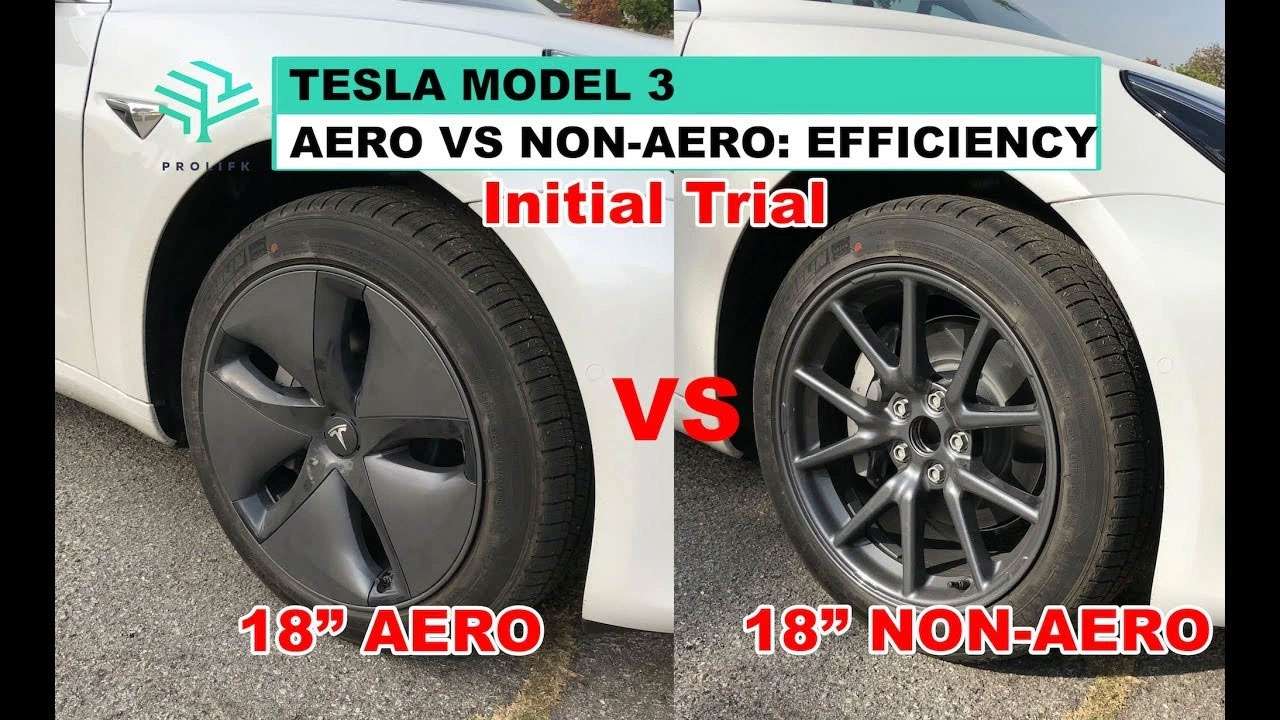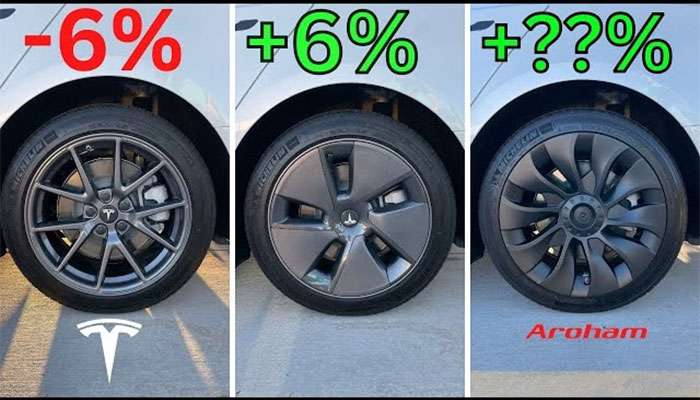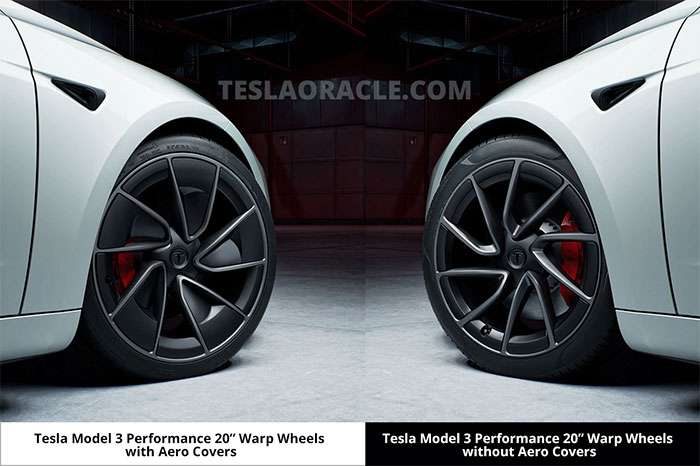
Wheel aerodynamics play a crucial role in electric vehicle performance, with proper wheel selection making the difference between reaching your destination and needing an unexpected charging stop. The numbers tell a compelling story - some EV models lose up to 68 miles of range simply from choosing larger wheels. Our analysis reveals that each inch increase in wheel size typically results in approximately 5% reduction in driving range. At highway speeds, aerodynamics become the dominant factor affecting your EV's energy consumption.
Understanding why larger wheels reduce range requires examining multiple factors that work against efficiency. Larger wheels carry more weight, demanding additional energy during acceleration and deceleration. They also feature greater width, creating increased wind resistance at higher speeds. The BMW i4 eDrive40 provides a perfect example - selecting 20-inch wheels instead of 17-inch alternatives results in up to 23% reduction in range. The physics behind this efficiency loss becomes clear when you consider that aerodynamic power requirements increase with the cube of velocity, making streamlined design essential for maximum range.
Aerodynamic wheels for electric vehicles represent one area where smart choices deliver measurable benefits. Tesla's Model S exemplifies this approach with its sleek design and remarkably low drag coefficient of 0.208, ranking among the most aerodynamically efficient production cars ever built. Aptera takes this concept even further with their three-wheeled design achieving a drag coefficient of just 0.13, potentially delivering up to 1,000 miles of range on a single charge.
This guide examines how wheel size and design impact your EV's range, explains the science behind aerodynamic wheels, and provides practical advice for choosing the right wheels to maximize efficiency while maintaining the style you want.
Electric vehicle efficiency depends heavily on wheel configuration choices that many drivers overlook. Understanding how different wheel characteristics impact your range helps you make informed decisions that match your driving needs.
Larger wheels create efficiency challenges primarily through increased weight that affects your EV's energy consumption. This additional mass demands more power to accelerate, particularly noticeable during city driving with frequent starts and stops. The issue becomes more complex because this isn't just static weight - it's rotating mass, which requires approximately 1.6 times more energy to move than equivalent stationary vehicle weight.
Your battery works harder during stop-and-go traffic conditions as it repeatedly overcomes this rotational inertia. These small efficiency losses add up over time, creating noticeable range reductions that affect your daily driving experience.
Wheel width presents an interesting trade-off between performance and efficiency. Wider tires enhance handling through increased road contact area, but they also expand your vehicle's frontal profile, creating additional wind resistance at highway speeds.
Research reveals that increasing tire width by 50% (from 205mm to 305mm) reduces range by only 1.7 miles over 200 miles of driving. More significant is the wheel's void ratio - the percentage of open area in the wheel design. Even a 5% change in void ratio can alter the air resistance coefficient by more than 0.003, demonstrating how wheel design details matter for aerodynamic performance.
Tire profile affects efficiency through complex interactions with rolling resistance. Lower-profile tires featuring smaller sidewalls can reduce rolling resistance by minimizing sidewall flex during rotation. However, these tires typically require larger, heavier wheels that offset some efficiency gains.
Rolling resistance occurs as tires deform at the contact patch, converting forward motion into heat energy. Each 1.0 reduction in rolling resistance coefficient can improve your vehicle's range by approximately 5%, making tire selection an important efficiency consideration.
The 2024 BMW i4 eDrive40 demonstrates how wheel choice directly impacts real-world driving range. Equipped with standard 17-inch wheels, this vehicle delivers 301 miles of range. The same vehicle with optional 20-inch wheels achieves only 233 miles - a dramatic 68-mile reduction. This represents a 23% decrease in overall range simply from selecting larger wheels, illustrating why wheel choice deserves careful consideration when purchasing an electric vehicle.
Electric vehicle aerodynamics depend heavily on how wheels interact with airflow around your vehicle. Wheel design creates complex air movement patterns that directly impact efficiency, going far beyond simple size and weight considerations.
Open-spoke wheel designs create substantial aerodynamic challenges for electric vehicles. These stylish designs allow high-pressure air from inside the wheel well to flow outward through spoke openings, creating what engineers call ventilation drag. This occurs as air passes through rotating wheel spokes, generating turbulence that works against forward motion. Flat-rim wheel designs can reduce aerodynamic drag by approximately 300 drag counts compared to open-spoke alternatives—a substantial improvement that translates directly into additional range.
Wheels play a surprisingly large role in your vehicle's overall aerodynamic performance. Wheels and their surrounding wheel arches account for up to 25% of a vehicle's total drag coefficient. Above 60 km/h, aerodynamic drag becomes the primary force resisting forward movement. Wheel-related turbulence comes from several sources:
Vortex shedding from open rim designs
Separation zones behind wheels
Disrupted airflow around wheel arches
Increased frontal area from wider wheels
Research shows that wheel-related turbulence contributes to 40% of aerodynamic losses attributed to wheelhouse and underbody areas.
Larger wheels reduce EV range through multiple aerodynamic mechanisms working against efficiency. Larger diameter wheels create longer moment arms for drag forces due to their extended spokes. These wheels typically feature more open, stylized designs that disrupt airflow more severely. Each inch increase in wheel diameter correlates with approximately 5% reduction in driving range.
CFD (Computational Fluid Dynamics) testing reveals the physics behind this efficiency loss. Simulation results across different speeds (60, 90, and 120 kph) consistently demonstrate that open-rim designs contribute significantly to aerodynamic resistance through flow separation.

Image Source: YouTube
EV manufacturers recognize the importance of aerodynamic efficiency, which explains why many offer specialized wheel covers designed to reduce air resistance. These simple additions deliver measurable improvements in real-world driving range.
Tesla equips the Model 3 with Aero Wheel covers as standard equipment, creating a smooth surface that minimizes air turbulence around the wheels. Some owners remove these covers for styling purposes, but they represent an intelligent balance between efficiency, cost, and appearance. Hyundai takes a similar approach with the IONIQ 5, designing wheels that minimize open areas while maintaining a flat front surface. Both manufacturers ensure their wheel designs prevent tires from extending beyond the vehicle body when viewed head-on, reducing overall air resistance. The IONIQ 5's distinctive 20-inch "fractal" wheels optimize airflow while delivering a unique visual appeal.
Real-world testing validates the effectiveness of aerodynamic wheel covers. ClearWatt's research demonstrates that aero covers provide a 4% boost in range during typical driving conditions. Independent testing supports these findings—nextmove's analysis showed Tesla's Aero Wheel caps reduce energy consumption by 3% at highway speeds, effectively adding 8 kilometers of range compared to driving without covers. Additional studies confirm improvements ranging from 3.4% to 4.5%, with the most significant benefits occurring at higher speeds.
Many drivers face the choice between efficiency and aesthetics when it comes to wheel covers. Tesla addressed this dilemma by making their covers easily removable, allowing owners to showcase the aluminum wheels underneath when desired. A practical strategy involves removing covers for city driving while reattaching them for longer highway trips. Those extra 10-15 miles of range can mean the difference between making it to your destination and needing an unplanned charging stop.

Image Source: Tesla Oracle
Selecting wheels for your electric vehicle requires balancing performance, appearance, and efficiency. Our experience shows that understanding these trade-offs helps you make the right choice for your driving needs.
Larger, stylish wheels undeniably enhance your EV's appearance, but this visual upgrade comes at a measurable efficiency cost. Each inch increase in wheel size reduces driving range by approximately 5%. Despite this penalty, many drivers prioritize appearance over efficiency—four out of five Hyundai Ioniq 5 customers choose larger wheels primarily for looks. As Richard Scheer from Chevrolet explains, "Even in the EV world, people will trade off range for cool wheels".
When making this decision, consider your typical driving patterns. City drivers who charge frequently may find the range reduction acceptable, while those taking regular highway trips should carefully weigh the efficiency impact.
When shopping for a pre-owned electric vehicle, examining the wheel configuration becomes essential for understanding true range capability. The BMW i4 eDrive40 demonstrates this importance—20-inch wheels instead of 17-inch alternatives create a startling 23% range reduction. What appears to be a minor detail significantly impacts your daily driving experience and affects resale value, as wheel configurations directly influence official efficiency ratings.
Always verify the current wheel setup against the vehicle's original specifications before making a purchase decision.
ClearWatt provides specialized tools to evaluate how your specific wheel setup affects real-world range. Their app uses computer vision technology to capture your wheel design and size, then calculates the actual impact on efficiency. Unlike standard dashboard estimates that rely on factory specifications, ClearWatt's analysis accounts for your actual wheel configuration, delivering precise range projections tailored to your driving conditions.
This technology helps you understand exactly how your wheel choice affects your vehicle's performance, enabling more informed decisions about upgrades or replacements.
Wheel aerodynamics represent one of the most important yet overlooked factors affecting electric vehicle performance. The evidence we've examined shows that wheel choices impact far more than just appearance - they directly determine how many miles you can drive on a single charge.
The numbers speak clearly. Larger wheels extract a measurable efficiency penalty, while aerodynamic wheel covers provide a practical solution that boosts range by approximately 4% during everyday driving. These simple additions essentially give you extra miles without any mechanical modifications. Smart EV owners keep covers on for highway trips where aerodynamic benefits matter most, then remove them for local driving when appearance takes priority.
What makes wheel selection particularly important is the science behind the efficiency losses. Wheels and their surrounding wheel wells contribute up to 25% of your vehicle's total drag coefficient. Open-spoke designs create ventilation drag, while larger diameters increase rotational mass that your battery must overcome during acceleration. The combination of these factors creates a double penalty that directly affects your driving range.
Your wheel decision comes down to personal priorities. We understand that many drivers willingly trade some efficiency for visual appeal - the data shows four out of five Hyundai Ioniq 5 customers choose larger wheels primarily for looks. Before making this choice, you should know exactly what you're giving up in terms of range and efficiency.
When shopping for wheels or considering upgrades, remember that this choice affects your daily driving experience. Whether you prioritize maximum range or prefer a more aggressive look, understanding these aerodynamic principles helps you make the right decision for your needs. Electric vehicle technology continues advancing, but the fundamental physics of aerodynamics remain constant - wheel design will always play a crucial role in maximizing your EV's efficiency and range.
Understanding wheel aerodynamics is crucial for maximizing your electric vehicle's efficiency and range potential.
• Larger wheels significantly reduce EV range - Each inch increase in wheel diameter decreases range by approximately 5%, with some models losing up to 68 miles simply from wheel choice.
• Aerodynamic wheel covers provide measurable benefits - Simple aero covers can boost range by 4% during everyday driving, offering extra miles without mechanical modifications.
• Wheels contribute heavily to overall drag - Wheels and wheel arches account for up to 25% of a vehicle's total drag coefficient, making design choices critically important for efficiency.
• Smart wheel selection balances esthetics and efficiency - While larger, stylish wheels enhance appearance, understanding the 23% range penalty helps make informed decisions based on your driving priorities.
• Open-spoke designs create significant aerodynamic penalties - Flat-rim wheel designs can reduce aerodynamic drag by approximately 300 drag counts compared to open-spoke alternatives through reduced ventilation drag.
Larger wheels can significantly reduce an EV's range. Each inch increase in wheel diameter typically results in about a 5% decrease in driving range. This is due to increased weight, wider surface area creating more drag, and disrupted airflow from open-spoke designs.
Yes, aerodynamic wheel covers can provide measurable benefits. Testing shows they can boost range by approximately 4% during everyday driving. For example, Tesla's Aero Wheel caps can reduce energy consumption by about 3% at highway speeds.
Many EV manufacturers offer aerodynamic wheels, but customer preferences often prioritize esthetics over efficiency. For instance, four out of five Hyundai Ioniq 5 customers opt for larger, less aerodynamic wheels primarily for their appearance, despite the impact on range.
The impact can be substantial. In some cases, such as the BMW i4 eDrive40, choosing 20-inch wheels instead of 17-inch wheels can result in a 23% reduction in range - a difference of up to 68 miles.
Yes, it's possible to strike a balance. Some EV owners use removable aerodynamic covers, keeping them on for long highway trips where efficiency matters most, but removing them for local driving or when appearance is prioritized. This approach allows for flexibility in managing range and esthetics.